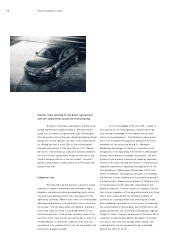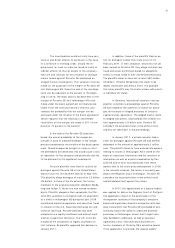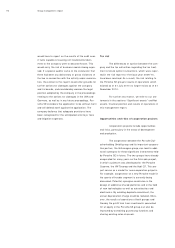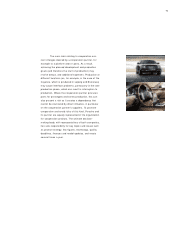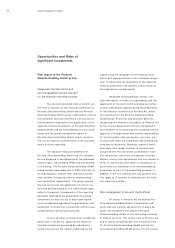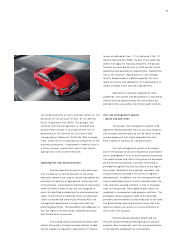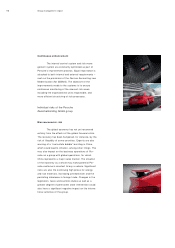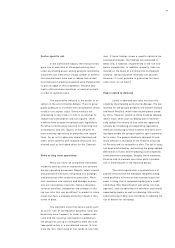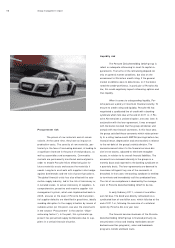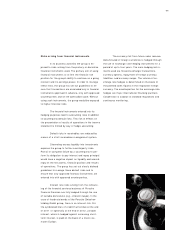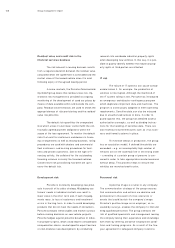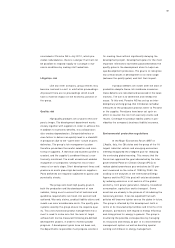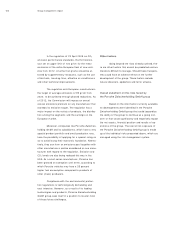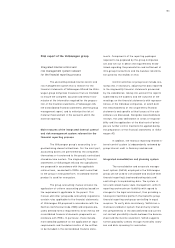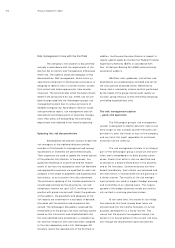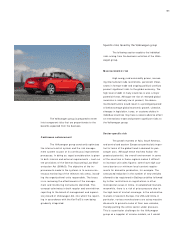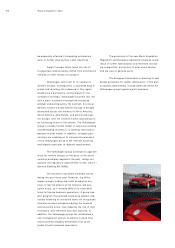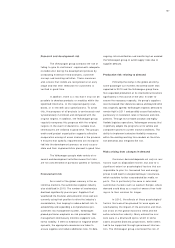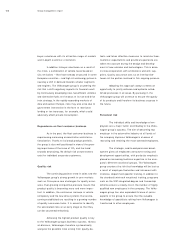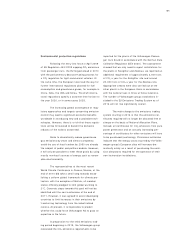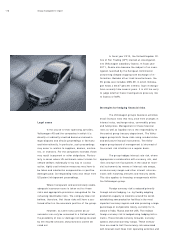Porsche 2010 Annual Report Download - page 102
Download and view the complete annual report
Please find page 102 of the 2010 Porsche annual report below. You can navigate through the pages in the report by either clicking on the pages listed below, or by using the keyword search tool below to find specific information within the annual report.Group management report
Residual value and credit risk in the
financial services business
The risk inherent in leasing business results
from a negative deviation between the residual value
calculated when the agreement is concluded and the
market value of the leased vehicle when it is sold
following expiry of the agreed leasing period.
In some markets, the Porsche Zwischenhold-
ing GmbH group bears this residual value risk. Op-
erational risk management is provided via ongoing
monitoring of the development of used car prices by
means of data available within and outside the com-
pany. Residual value forecasts are used to check the
appropriateness of risk provisioning and the residual
value risk potential.
The default risk quantifies the unexpected
loss which arises if a borrower cannot fulfill the con-
tractually agreed payment obligations within the
scope of the loan agreement. To monitor the default
risks that exist for customers and dealers in financ-
ing arrangements as well as leasing business, rating
procedures are used with dealers and commercial
fleet customers, and scoring procedures for busi-
ness and private customers. Due to the type of fi-
nancing activity, the collateral for the outstanding
financing volumes is mainly the financed vehicles.
Conservative risk provisioning has been set up to
cover the default risk.
Development risk
Porsche is constantly developing new prod-
ucts in pursuit of its sales strategy. Misjudging cus-
tomers’ needs in individual markets can result in
lower sales in the short term and, if such misjudg-
ments recur, to loss of customers and investment
errors in the long term. In order to avoid developing
products that do not meet the needs of consumers,
Porsche conducts trend studies and market surveys
before making decisions on new vehicle projects.
Porsche hedges against potential breaches of indus-
trial property rights, which could lead to considerable
compensation claims, market-specific export barriers
or cost-intensive new development, by conducting
research into worldwide industrial property rights
when developing new vehicles. In this way, it is pos-
sible to quickly identify whether the industrial prop-
erty rights of third parties are affected.
IT risk
The failure of IT systems can cause consid-
erable losses if, for example, the production of
vehicles is interrupted. Although the likelihood of
the IT system failing is low, Porsche has introduced
an emergency and disaster contingency program
which duplicates important data and machines. The
program is continuously adapted to meet operating
requirements. Sensitive data can also be misused
due to unauthorized access to data. In order to
guard against this, the group has detailed access
authorization concepts, as well as binding instruc-
tions for the handling of sensitive data. There are
also technical countermeasures such as virus scan-
ners and firewall systems in place.
To minimize delays in production, the group
has an escalation model. If defined thresholds are
exceeded – e.g. an unacceptably high number of
vehicles are on the assembly line in the wrong order
– a meeting of a certain group of persons is con-
vened in order to take appropriate countermeasures
without delay. This process helps to ensure that
vehicles are manufactured to plan.
Personnel risk
A positive image is crucial to any company.
The communication strategy of the group ensures
that communication and actions are decisive and
professional in the event of crisis scenarios or
events that could tarnish the company’s image.
Porsche's positive image as an employer, as re-
vealed by surveys, enables the company to find and
keep qualified personnel. The group combats the
risk of qualified specialists and management leaving
the company taking their experience and knowledge
with them by offering attractive employment condi-
tions and training programs. As a result of the five-
year agreement to safeguard company locations
10 0


